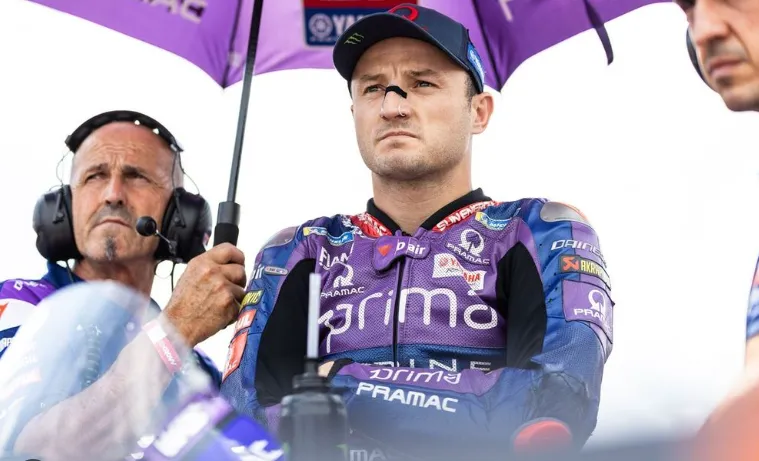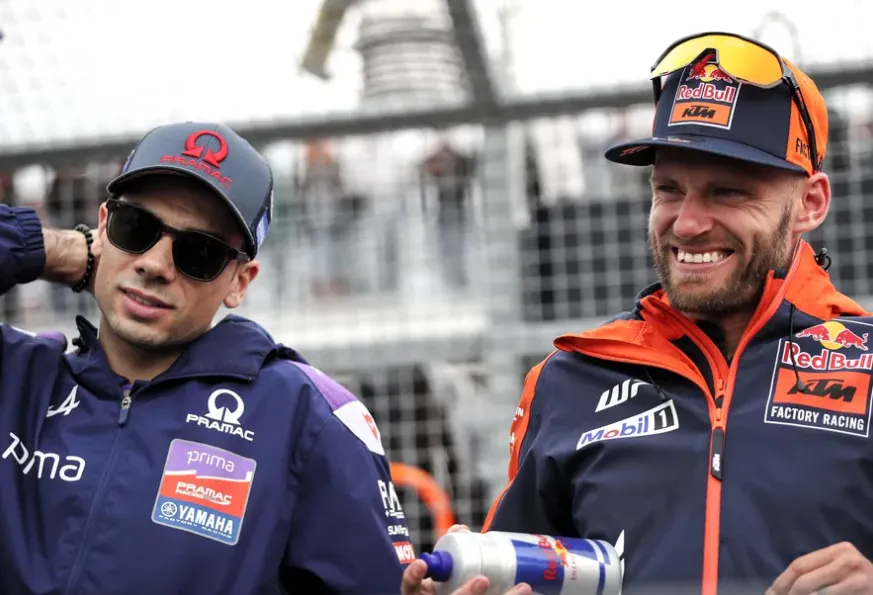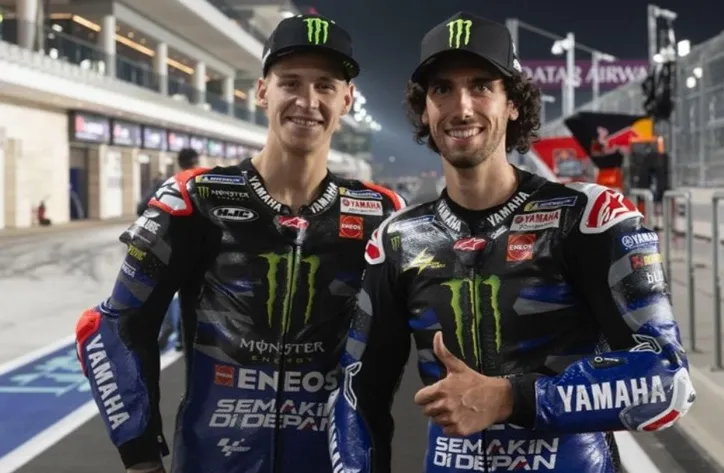
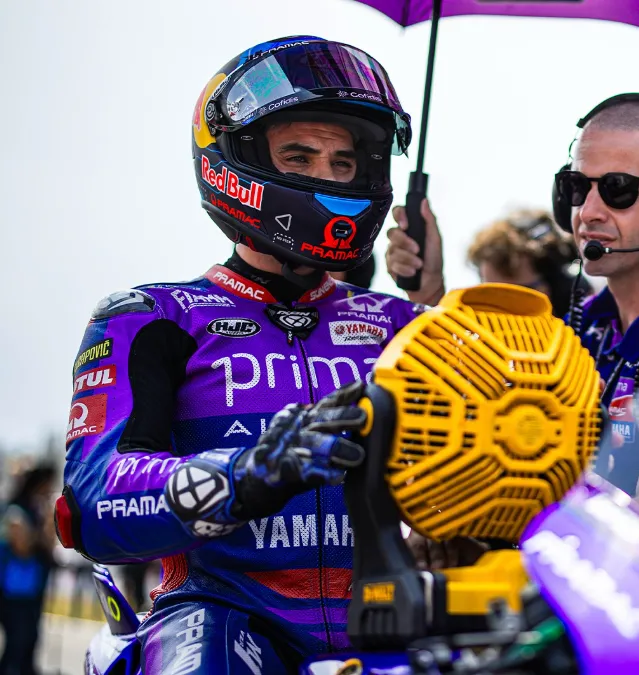
Even though he is the best-performing Yamaha rider at Mugello, Miguel Oliveira still admitted: “It’s just… less bad!”
At first glance, Miguel Oliveira’s result at Mugello may appear as a bright spot in an otherwise gloomy weekend for Yamaha. The Portuguese rider outpaced his factory teammate Fabio Quartararo and delivered the highest-placed finish among Yamaha riders. But rather than celebrate, Oliveira’s post-race comment—“It’s just… less bad”—cut deeper than any podium speech could.
His words perfectly capture the awkward truth: being the best Yamaha on the grid today doesn’t mean you’re fighting for wins. It means you’re fighting for survival in the lower half of the top 10—or worse.
The Mugello Context: Yamaha’s Performance in Freefall
The Italian Grand Prix at Mugello has historically been a power track that exposes weaknesses in straight-line speed, grip, and acceleration—all areas where Yamaha is sorely lacking in 2025. With Ducatis dominating and Aprilias nipping at their heels, Yamaha’s inline-four philosophy continues to fall behind in performance evolution.
Both factory and satellite Yamaha bikes struggled with grip, acceleration, and top-end performance across practice and qualifying. While Quartararo suffered a steady decline to P14, Oliveira managed to salvage a better result—but even he didn’t hide his frustration.
Miguel Oliveira crossed the line as the top Yamaha finisher, but far from celebrating, he offered a raw and honest take: “It wasn’t a good race. It was just… less bad.” Those few words reveal the painful truth about Yamaha’s current reality—it’s not about being good; it’s about being slightly less lost than the others.
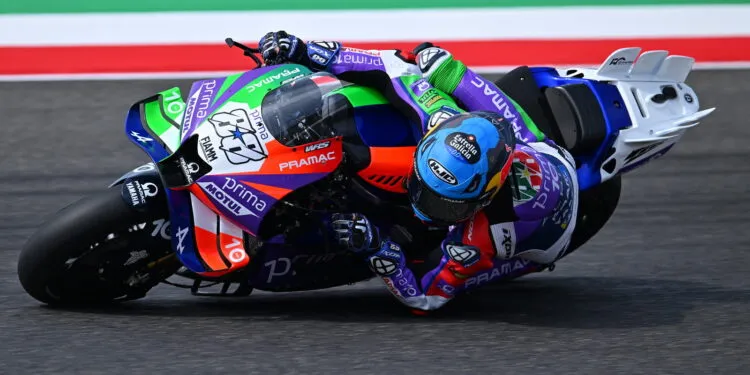
Miguel Oliveira: Always the Fighter, Even Without the Tools
Throughout his career, Miguel Oliveira has built a reputation as a fighter—a technical rider capable of delivering results when the odds are against him. His calm demeanor often hides his ability to squeeze the maximum out of underdeveloped machinery. That skill is being tested like never before at Yamaha.
In Mugello, Oliveira showed resilience. He battled through a weekend of unpredictable grip levels, tire degradation, and insufficient acceleration to keep the bike pointed forward. But despite his best efforts, there was never a moment when he could truly attack the riders ahead.
Instead, his ride was about damage limitation. He managed tire life, stayed clean, and tried to keep within striking distance of the top 10—never truly able to mount a challenge, but always vigilant not to drop back. That’s the kind of cautious race a Yamaha rider has to run in 2025: not bold, but smart.
“Less Bad” Is Not a Strategy—It’s a Sign of Decline
When a rider like Miguel Oliveira—experienced, intelligent, and calm—chooses to define his best result of the season as merely “less bad,” it’s not a throwaway comment. It’s a signal flare.
What was once a factory team and satellite structure designed to chase wins and podiums is now stuck in a rut of measuring success by how far behind they finish rather than how close they get to the top. Oliveira’s statement echoes the sentiment in the Yamaha camp: this is not good enough.
He may have crossed the line ahead of Quartararo and Alex Rins, but that’s cold comfort when the Ducati contingent fills the top 6, and even KTM and Aprilia satellites are pulling away.
Riding on the Edge of Frustration
Even though Oliveira delivered the best Yamaha result at Mugello, the struggle was clear. Onboard footage showed him constantly fighting the bike’s rear end under acceleration. The lack of rear grip, an issue plaguing all Yamaha riders this year, once again reared its head on a circuit where corner exit and drive onto straights are crucial.
He was also visibly cautious on braking—another symptom of a bike that feels unstable under load. While Ducati riders like Bagnaia and Martin could dive in late and confidently hold a tight line, Oliveira had to brake earlier and carry less speed—just to keep the bike upright.
This style of riding is not only slow—it’s physically and mentally draining. For Oliveira, Mugello wasn’t a race—it was a constant battle for control, every lap a negotiation with the machine rather than an expression of racing instinct.
No Consistency, No Confidence
Yamaha’s biggest problem in 2025 isn’t just outright speed—it’s the inconsistency of their package. One session might look promising, only for the next to be a disaster. Tire life is unpredictable. Electronics don’t always behave the same way. Aerodynamics feel different from one corner to the next.
Miguel Oliveira echoed this after Mugello, noting that every corner feels like a new challenge, and that the behavior of the bike shifts as fuel loads change and tires degrade. Riders don’t just need speed—they need predictability. Without that, they can’t push to the limit. And for Oliveira, who’s spent his career building precision into his riding, this unpredictability is both frustrating and demoralizing.
Satellite or Not, Expectations Remain High
Even though Oliveira is riding for Trackhouse Yamaha, the sport doesn’t distinguish much between factory and satellite riders when it comes to pressure. Fans, media, and the team all expect results—especially when you’re the top finisher in the Yamaha camp.
And Oliveira knows that. His understated reaction to Mugello isn’t just about humility—it’s about realism. He understands that being the best Yamaha means little when it doesn’t translate into meaningful points or podium contention. His disappointment isn’t in his own performance—it’s in the inability of the machine to match his intentions.
Pushing for Change, Not Just Hope
In his comments after Mugello, Miguel Oliveira also expressed cautious hope for upcoming changes. Yamaha has been teasing a development pivot, including the rumored introduction of a V4 engine and significant chassis overhauls. But Oliveira, like Quartararo, remains skeptical.
He’s seen promises before. He’s ridden through half-measures and ineffective upgrades. At this stage of his career, Oliveira knows that hope is not a strategy. Only real technical breakthroughs will make a difference—and time is running out.
His tone suggests a rider who still believes in the project but won’t wait forever. Like Quartararo, he’s aware that MotoGP is brutal—and if Yamaha can’t deliver, other manufacturers will gladly give him a better seat.
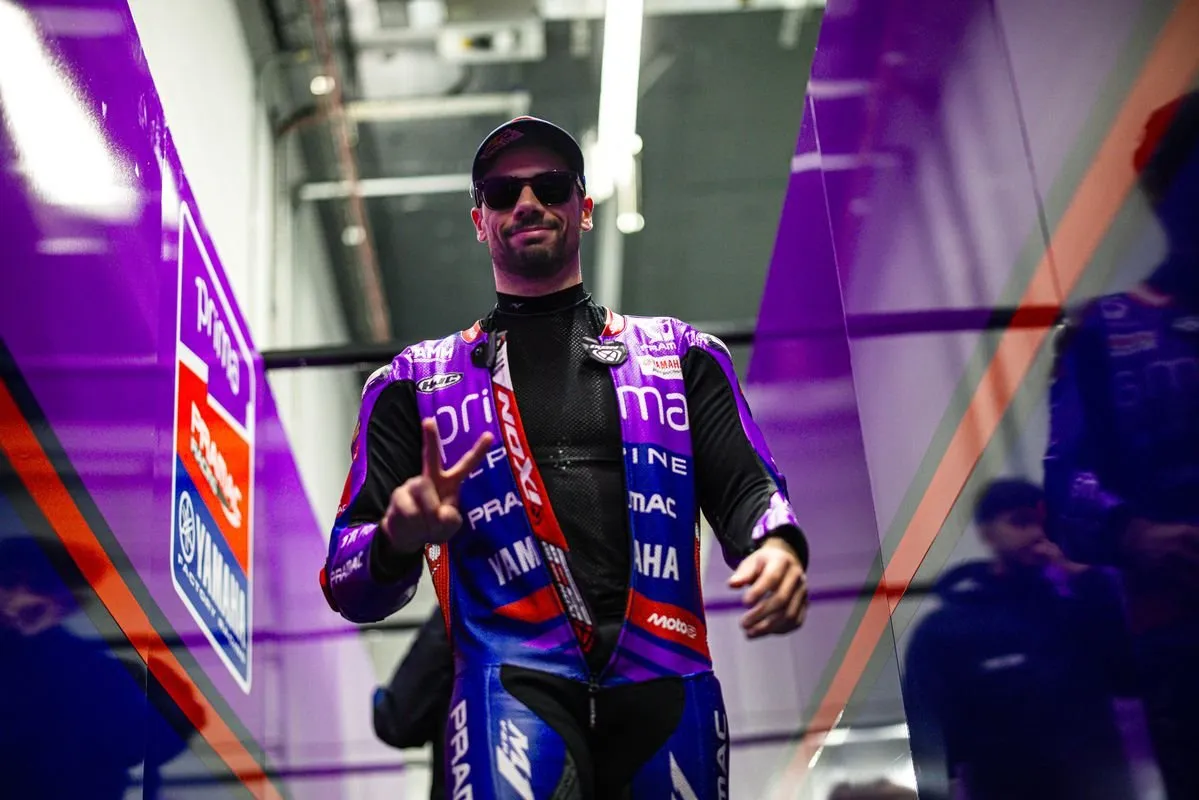
What Yamaha Needs to Do—Urgently
The message from Mugello couldn’t be clearer. Yamaha must act now to prevent a complete collapse in rider morale and performance. Riders like Miguel Oliveira can’t continue delivering “less bad” results without progress. The team needs:
-
A consistent, grippy rear-end solution that works across tire wear cycles
-
A more powerful, usable engine that doesn’t sacrifice stability
-
A clear development path that avoids aimless setup changes each weekend
-
Honest communication with their riders and fans about real solutions—not vague promises
If Yamaha continues to drift, they risk losing not only races but also the loyalty of riders like Oliveira who can’t afford to spend their prime years chasing P12.
Final Thoughts: From Quiet Triumph to Lingering Trouble
Miguel Oliveira’s “less bad” result at Mugello wasn’t a win—but it wasn’t a loss either. It was a symptom. A signal. A summary of Yamaha’s current plight. He did what he could, extracted every ounce from a flawed machine, and still found himself fighting just to stay relevant.
But his honesty is valuable. In an era of media-trained vagueness, Oliveira’s transparency gives fans a glimpse into the real struggles behind the lap times. He’s not content with empty praise for being the best Yamaha. He wants to be in the fight for wins, not simply survive the race.
And if Yamaha listens—really listens—his words could spark the change they so desperately need.








